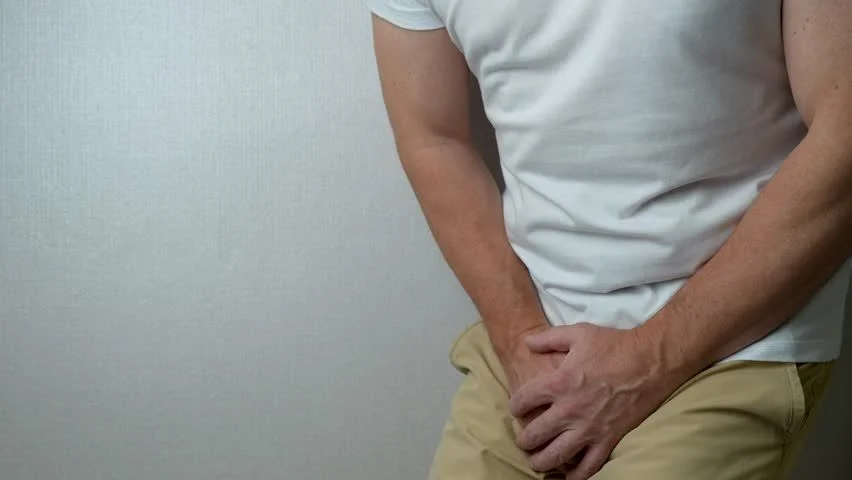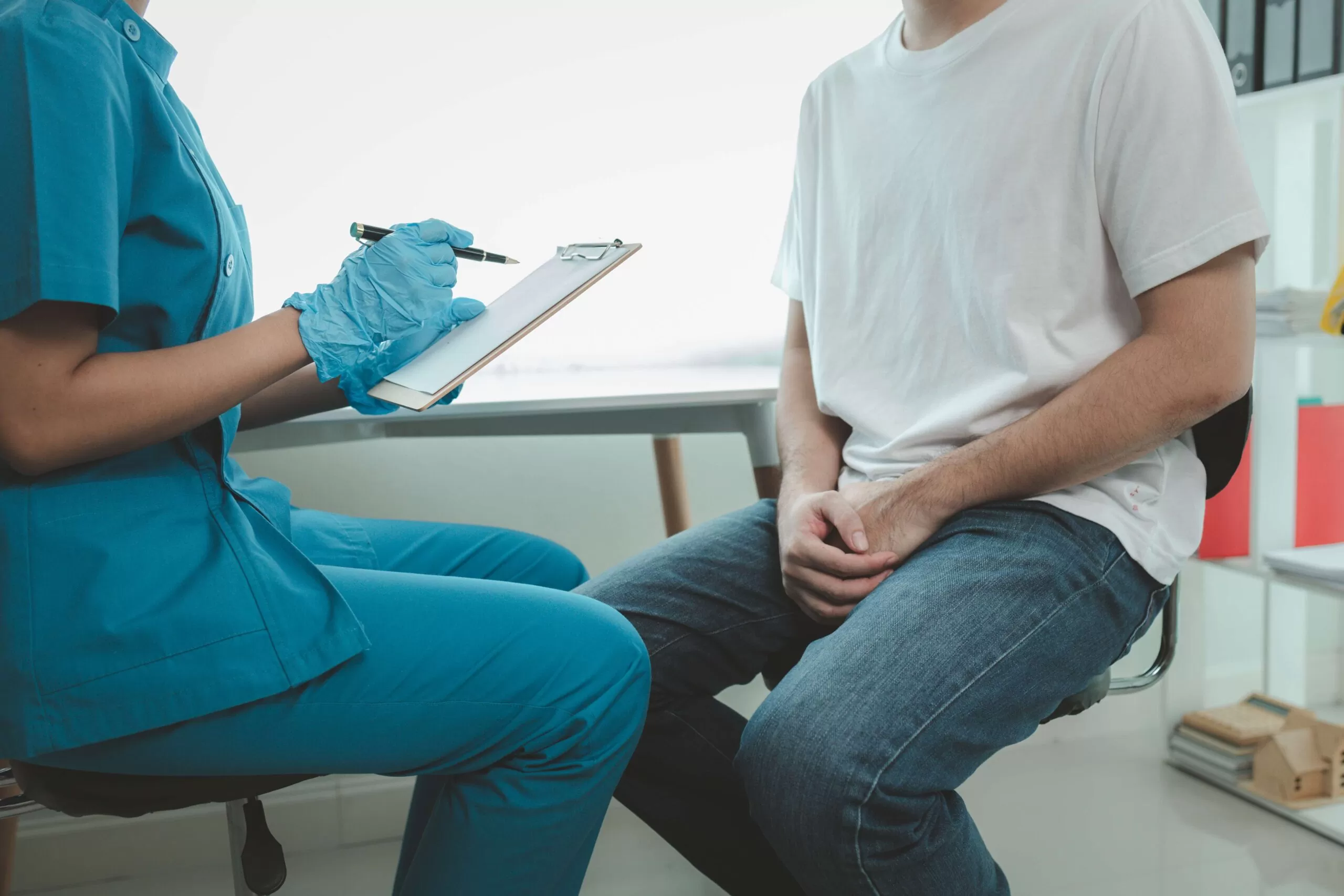Painful urination, medically known as dysuria, is a distressing symptom that many men experience at some point. While it can stem from various causes, prostatitis—a condition involving inflammation of the prostate gland—is a common culprit, particularly in men under 50. This article explores why men experience painful urination, whether prostatitis could be the cause, its types, symptoms, risk factors, diagnosis, and treatment options, offering actionable insights for those seeking answers and relief.
I. What is Painful Urination?
1. Definition and Common Causes
Painful urination refers to discomfort, burning, or stinging during or after urination. According to the Cleveland Clinic, dysuria in men can result from several conditions, including urinary tract infections (UTIs), sexually transmitted infections (STIs), kidney stones, or prostate issues like benign prostatic hyperplasia (BPH) or prostatitis. While less common in men than women, UTIs and prostatitis are leading causes of dysuria in men under 50.
2. Why Prostatitis Stands Out
Prostatitis is a frequent cause of painful urination, particularly in younger and middle-aged men. The prostate gland, located below the bladder and surrounding the urethra, can become inflamed or infected, leading to discomfort during urination. The National Institute of Diabetes and Digestive and Kidney Diseases (NIDDK) notes that prostatitis accounts for about 2 million doctor visits annually in the U.S., highlighting its prevalence.

II. Understanding Prostatitis
1. Types of Prostatitis
Prostatitis is classified into four types, each with distinct causes and symptoms:
- Acute Bacterial Prostatitis: Caused by bacterial infection, often sudden and severe, with symptoms like fever, chills, and intense pelvic pain.
- Chronic Bacterial Prostatitis: A recurring bacterial infection, causing milder but persistent symptoms.
- Chronic Pelvic Pain Syndrome (CPPS): The most common type, non-bacterial, with unclear causes, leading to chronic pelvic pain and urinary issues.
- Asymptomatic Inflammatory Prostatitis: No symptoms but detected during tests for other conditions, often showing inflammation in prostate tissue.
According to a 2024 StatPearls article, CPPS accounts for 90–95% of prostatitis cases, making it a significant focus for men with dysuria.
2. How Prostatitis Causes Painful Urination
When the prostate becomes inflamed, it can swell and compress the urethra, causing irritation during urination. Bacterial infections may also spread to the urethra or bladder, intensifying the burning sensation. CPPS, though non-bacterial, may involve nerve or muscle dysfunction in the pelvic region, contributing to discomfort.
III. Symptoms of Prostatitis
1. Urinary Symptoms
Prostatitis often presents with:
- Pain or burning during urination (dysuria).
- Frequent or urgent need to urinate, especially at night (nocturia).
- Difficulty starting or maintaining urine flow.
- Cloudy urine or blood in the urine (hematuria).
2. Other Symptoms
Beyond urinary issues, prostatitis may cause:
- Pelvic or perineal pain.
- Painful ejaculation or sexual dysfunction.
- Lower back pain or discomfort in the genital area.
- Flu-like symptoms (in acute bacterial prostatitis).
These symptoms can significantly affect daily life, as noted by Johns Hopkins Medicine, often leading to emotional distress or reduced quality of life.
IV. Risk Factors for Prostatitis
1. Age and Medical History
Prostatitis is most common in men under 50, though it can occur at any age. Risk factors include:
- Previous prostate infections or UTIs.
- Recent urinary catheter use.
- Pelvic trauma or procedures, such as prostate biopsies.
2. Lifestyle and Environmental Factors
Certain behaviors increase risk, such as:
- Prolonged sitting or cycling, which puts pressure on the prostate.
- Dehydration, leading to concentrated urine that irritates the urethra.
- Unprotected sexual activity, increasing STI risk, which can trigger prostatitis.
Yale Medicine emphasizes that stress and poor pelvic muscle control may exacerbate CPPS symptoms.

V. Diagnosis of Prostatitis
1. Initial Evaluation
Diagnosing prostatitis begins with a detailed medical history and physical exam, including a digital rectal exam (DRE) to assess prostate tenderness or swelling. The American Urological Association (AUA) recommends the National Institutes of Health Chronic Prostatitis Symptom Index (NIH-CPSI) to evaluate symptom severity.
2. Diagnostic Tests
Additional tests may include:
- Urine Analysis: To detect bacteria or blood.
- Prostate-Specific Antigen (PSA) Test: Elevated levels may indicate inflammation but are not specific to prostatitis.
- Prostate Massage: Collects prostate fluid for bacterial testing.
- Imaging: Ultrasound or MRI to rule out other conditions like BPH or prostate cancer.
VI. Treatment Options for Prostatitis
1. Medications
Treatment varies by prostatitis type:
- Antibiotics: Used for acute and chronic bacterial prostatitis, typically for 4–6 weeks (e.g., ciprofloxacin).
- Alpha Blockers: Relax bladder and prostate muscles to ease urinary symptoms (e.g., tamsulosin).
- Anti-inflammatory Drugs: Reduce pain and inflammation in CPPS (e.g., ibuprofen).
- Pain Management: For chronic cases, medications like gabapentin may help.
2. Lifestyle and Supportive Therapies
For CPPS, non-drug therapies are often effective:
- Pelvic Floor Physical Therapy: Strengthens pelvic muscles to reduce pain.
- Stress Management: Techniques like mindfulness or cognitive behavioral therapy can alleviate CPPS symptoms.
- Dietary Changes: Avoiding bladder irritants like caffeine, alcohol, or spicy foods.
3. Surgical Interventions
Surgery is rarely needed but may be considered for severe cases, such as transurethral resection of the prostate (TURP) to relieve obstruction in chronic bacterial prostatitis.

VII. Prevention and Management Tips
1. Proactive Lifestyle Changes
To reduce the risk or severity of prostatitis:
- Stay hydrated to flush the urinary tract.
- Practice safe sex to prevent STIs.
- Avoid prolonged pressure on the prostate (e.g., limit long periods of cycling).
- Manage stress through exercise or relaxation techniques.
2. Regular Medical Check-Ups
Men with a history of prostatitis or urinary symptoms should undergo regular screenings. Early detection can prevent complications like chronic pain or recurrent infections. Harvard Health recommends annual check-ups for men over 40, especially those with risk factors.
VIII. Specialized Care at Men's Health Vietnam Center
For men in Vietnam seeking expert care for prostatitis and related conditions, the Men's Health Vietnam Center in Ho Chi Minh City offers comprehensive andrology services tailored to male health needs. Established in 2016, the center is renowned for its state-of-the-art facilities and a team of specialists, including members of the International Society for Sexual Medicine, who provide world-class care. Services relevant to prostatitis include advanced diagnostic testing (e.g., urine analysis, PSA testing, and prostate fluid analysis), personalized treatment plans with antibiotics or alpha blockers, and pelvic floor therapy for Chronic Pelvic Pain Syndrome (CPPS). The center also offers sexual health consultations, STI testing, and treatments for conditions like premature ejaculation, ensuring holistic care. With a patient-centered approach and adherence to U.S. standards, Men's Health Vietnam creates a comfortable, confidential environment for men to address urinary and pelvic symptoms effectively.
- Address: 7B/31 Thanh Thai Street, Ward 14, District 10, Ho Chi Minh City, Vietnam
- Website: menhealth.vn
- Fanpage: facebook.com/trungtamsuckhoenamgioi
- Contact: (+84) 902 353 353
 0902 353 353
0902 353 353 Giờ làm việc: 08:00 - 20:00
Giờ làm việc: 08:00 - 20:00 7B/31 Thành Thái, Phường Diên Hồng, TP. HCM
7B/31 Thành Thái, Phường Diên Hồng, TP. HCM



